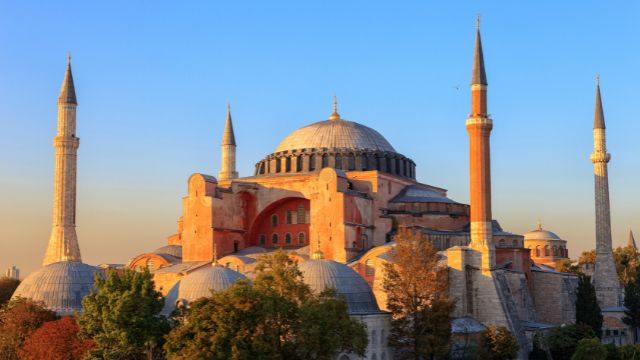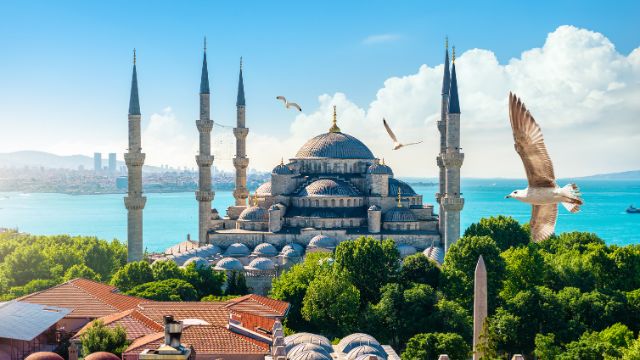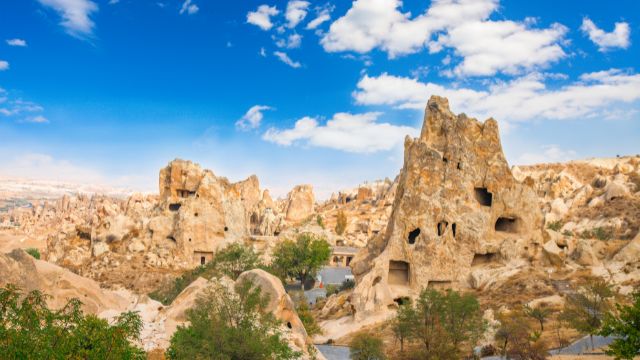Turkish territory spans both Europe and Asia. As a cultural destination, it draws tourists from every corner of the world. The country shares a significant portion of its border with the sea, offering views of breathtaking coastlines. So, basically, you are getting an opportunity to go for a marine drive! Consider marine equipment with you while on boat. Also, visitors love the location’s rich history, breathtaking scenery, stunning architecture, charming locals, excellent shopping, and delectable cuisine.
Istanbul Airport is the primary international airport and provides service to destinations across the globe. With affordable flights, Pegasus Airlines connects Istanbul with a number of significant locations. You can search for and locate the cheapest price in Istanbul for your trip to Turkey thanks to various travel websites that offer user-friendly online booking.
You are in for a wonderful trip if you decide to travel to Turkey for a week. You will have the opportunity to view some distinctive, untouched natural landscapes, and charming historical sites, and get a taste of the warm Turkish culture on this week-long Turkey tour.
Day 1 and Day 2: Visiting some landmarks in Istanbul
Istanbul, historically known as Constantinople and the imperial city of both the Ottoman and Byzantine Empires will be the starting point of your trip through Turkey. The only city that lies on the dividing line between Europe and Asia is this one. You will travel to famous locations like:
- Hagia Sophia
Image Resource : Canva
Hagia Sophia, built by Emperor Justinian of Rome in 537, is one of the most prominent mosques in the capital city. It was initially a cathedral in Constantinople and was made into a mosque decorated with mind-blowing architecture, art coverings, and mosaics during the Ottoman Empire.
- Blue Mosque
Image Resource : Canva
The Sultan Ahmed Mosque, also known as the Blue Mosque, is Istanbul’s most exquisite architectural creation and is noted for its breathtaking hand-painted blue tiles. You can see a splendid marble mihrab and numerous stained-glass windows in the mosque.
- Topkapi Palace
The Ottoman sultans used this palace as their home in the 15th and 16th centuries. It is now a big museum that exhibits artifacts from Ottoman rule. Being a UNESCO site, it is also known for the Treasury and Ottoman Imperial Harem.
- Basilica Cistern
The Basilica Cistern is one of the largest cisterns built by the Romans as water filtration for the palaces.
If you have time, you can also visit the Grand Bazaar, a traditional market with over 4000 retail shops.
Day 3: Walking on the Galata Bridge and visiting other iconic places
You can reach and cross the Galata Bridge on the third day to visit several other historical places. A 19th-century bridge, Galata Bridge runs across Istanbul’s Golden Horn channel, connecting the old city with the recent areas.
- Galata Tower
As part of the Walls of Galata, the tower was built in 1348 by the Roman Empire. Later, it was restored in the 1960s, when it was completely damaged by fire. You can see the entire city from the top of the tower. Additionally, you can find a museum and an exhibition area in the tower.
Istiklal, Istanbul’s most famous street, is where you will discover a blend of the old and the new. The red tram rides on the pedestrian thoroughfare, originally known as Grand Avenue of Pera, are well-known.
- Bosphorus Cruise
An evening sail down the Bosphorus is a great way to unwind. The ride from Istanbul’s Golden Horn to the Bosphorus offers stunning views of the palaces and the sunset.
Day 4: Visiting other significant Istanbul locations
On your third day, you will have a tour of Asiatic Istanbul. The largest mosque, Camlica Mosque, the hip and vibrant suburb of Moda, and some delectable street food may all be visited first.
- Çamlıca Mosque
The Camlica Mosque, which measures 236 feet, is the biggest in Istanbul. It contains a meeting room, library, and art gallery.
You can continue south to Moda from the mosque. This hipster area features street art, chic coffee shops, quaint boutiques, and a peaceful park.
Day 5: Visiting Cappadocia
Turkey’s Anatolia area contains the enormous desert landscape known as Cappadocia. Given that it is 1,050 meters above sea level, nights will be chilly, even in summer. In addition to its unusual rock formations, the entire area is also known for its fairy chimneys, which are old cave homes where people formerly resided.
You can have fun in Cappadocia on a hot air balloon flight by booking it earlier. After the flight, you can visit the Red and Rose Valleys and the Derinkuyu Underground City, which is the largest at 8 levels deep.
Day 6: Spending more time in Cappadocia
Image Resource : Canva
You will have to take it easy the next day in Cappadocia because you have a flight later that day. It would be advisable to spend the morning touring the Goreme Open Air Museum before spending the afternoon exploring one of the valleys.
Pigeon Valley is near Goreme and will be a smart choice. You can then fly to Izmir after that.
Day 7: Exploring Izmir
The ancient Ephesus ruins are one of the main attractions in Izmir. The ancient Greeks lived in this well-preserved city in the 10th century BC.
The Temple of Artemis, House of the Virgin Mary, Celsus Library, Roman Amphitheatre, which accommodated 24,000 spectators, and Temple of Hadrian are the most renowned attractions in Ephesus, Turkey.
With the itinerary set, you can plan your visit to Turkey during April or November, when it is less crowded. Nevertheless, check for the best deals on a travel website to book cheap flights.




